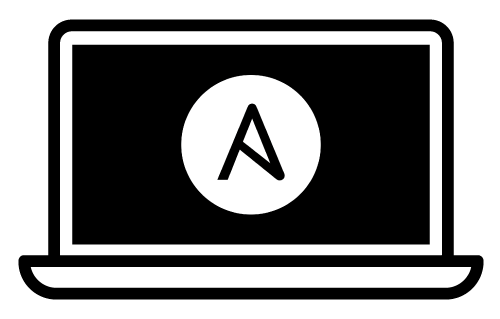This playbook installs and configures most of the software used on Mac for software development. Some things in macOS are slightly difficult to automate, so there are still a few manual steps, but much less than if you were to install all the software yourself. Please review the main files in this repository and change them approiately to your needs:
- main.yml - This is the main playbook file.
- default.config.yml - Contains all software and VS Code extensions
- dotfiles - You should review the repo that this links to as the dotfiles used may not be to your liking.
- VS Code - You should review that the VSCode extensions in main.yml are what you would want and also update the user to your username (currently set as admin).
- Ensure Apple's command line tools are installed (xcode-select --install to launch the installer).
- Run the run-setup.sh script to install the required software.
- Run
ansible-playbook main.yml --ask-become-passinside this directory. Enter your macOS account password when prompted for the 'BECOME' password.
Note: If some Homebrew commands fail, you might need to agree to Xcode's license or fix some other Brew issue. Run
brew doctorto see if this is the case.
You can filter which part of the provisioning process to run by specifying a set of tags using ansible-playbook's --tags flag. The tags available are dotfiles, homebrew, mas, extra-packages and osx.
ansible-playbook main.yml -K --tags "dotfiles,homebrew"
Not everyone's development environment and preferred software configuration is the same.
You can override any of the defaults configured in default.config.yml by just updating them in situ or by creating a config.yml file and setting the overrides in that file. For example, you can customize the installed packages and apps with something like:
homebrew_installed_packages:
- cowsay
- git
- go
mas_installed_apps:
- { id: 443987910, name: "1Password" }
- { id: 498486288, name: "Quick Resizer" }
- { id: 557168941, name: "Tweetbot" }
- { id: 497799835, name: "Xcode" }
composer_packages:
- name: hirak/prestissimo
- name: drush/drush
version: '^8.1'
gem_packages:
- name: bundler
state: latest
npm_packages:
- name: webpack
pip_packages:
- name: mkdocs
configure_dock: true
dockitems_remove:
- Launchpad
- TV
dockitems_persist:
- name: "Sublime Text"
path: "/Applications/Sublime Text.app/"
pos: 5Any variable can be overridden in config.yml; see the supporting roles' documentation for a complete list of available variables.
Applications (installed with Homebrew Cask):
- ChromeDriver
- Docker
- Google Chrome
- Homebrew
- iTerm2
- MySql
- Postgresql
- Postman
- Slack
- Sourcetree
- Vagrant
- VirtualBox
- Visual Studio Code
- OpenJDK
Packages (installed with Homebrew):
- bash-completion
- git
- github/gh/gh
- hub
- go
- gpg
- mysql
- sqlite
- nmap
- node
- nvm
- ssh-copy-id
- readline
- openssl
- wget
- zsh-history-substring-search
- tmux
- romkatv/powerlevel10k/powerlevel10k
- awscli
- jq
- tree
- warrensbox/tap/tfswitch
- packer
- jenv # Manage your Java environment
- jmeter # Load testing and performance measurement application
- maven # Java-based project management
My dotfiles are also installed into the current user's home directory, including the .osx dotfile for configuring many aspects of macOS for better performance and ease of use. You can disable dotfiles management by setting configure_dotfiles: no in your configuration.
Finally, there are a few other preferences and settings added on for various apps and services.
It's my hope that I can get the rest of these things wrapped up into Ansible playbooks soon, but for now, these steps need to be completed manually (assuming you already have Xcode and Ansible installed, and have run this playbook).
- Native MacOS terminal may need a font and theme update via preferences to take in changes made in .zshrc (MesloLGS NF Regular 13 and theme of your choice)
- Visual Studio Code may also need a font update via preferences:
- Preferences > Editor > Font Size:
"terminal.integrated.lineHeight": 1.3- Preferences > Editor > Font Family:"terminal.integrated.fontFamily": "MesloLGS NF" - For iTerm2, you may need to install a font via running
p10k configureand then restart iTerm2.
This has been tested via Vagrant and VirtualBox using macOS Big Sur. Check the following repo with how to do this: https://github.com/devunderslash/Vagrant-Macos-BigSur
Or use this repo to build a Mac OS X VirtualBox VM, on which you can continually run and re-run this playbook to test changes and make sure things work correctly.
Check out Ansible for DevOps, which teaches you how to automate almost anything with Ansible.
This project was created by Jeff Geerling (originally inspired by MWGriffin/ansible-playbooks) and butchered by Paul Devlin
These resources were used as the basis for the approach outlined above:
Install Python the right way - https://opensource.com/article/19/5/python-3-default-mac The original mac-devops-setup - https://github.com/geerlingguy/mac-dev-playbook Powerlevel10k - https://github.com/romkatv/powerlevel10k Geerlingguy dotfiles - https://github.com/geerlingguy/dotfiles Devunderslash dotfiles - https://github.com/devunderslash/dotfiles Playbook with VSCode - https://github.com/DemisR/mac-devops-setup Step by step ansible resource - http://www.talkingquickly.co.uk/2021/01/macos-setup-with-ansible/ Pyenv - https://github.com/pyenv/pyenv
